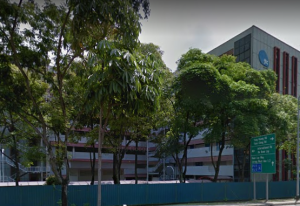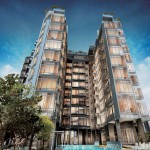Compared with data from the previous three months, industrial space rent and prices remained relatively stable in the first quarter of the year suggested the JTC All Industrial Rental Index in Q1 2019. The report showed that overall occupancy rate for the industrial market remained flat q-o-q at 89.3% in Q1 2019.
The JTC index showed that prices of industrial space saw minor declines in the 1st quarter of 2019.
Table of Contents
https://www.icompareloan.com/resources/funan/
Commenting on JTC’s statistics on industrial space, CBRE said despite the stabilization in the industrial market, the factory submarket continued to exhibit some weakness. The JTC single-user factory rental index registered a 0.6% q-o-q decline, while the JTC multiple-user factory rental index eased by 0.1% q-o-q in Q1 2019.
“Even though vacancy for the factory submarket eased slightly by 0.1% to 10.4%, it still represents a total of 40.39 million sq ft of vacant stock in the market. Anecdotally, most of these vacant stock comprises older factory spaces with lower specifications and the volume of vacant stock will continue to put off any rental rebound in the market.
Warehouses, on the other hand, registered its first positive rental growth of 0.1% in 16 quarters. This is despite occupancy ease by 0.3 percentage points q-o-q to 89.2%.
With a lean pipeline ahead and limited speculative supply, occupancy rate is expected to improve. That said, it is still subject to the global trade uncertainties between the U.S. and China, as the heightened trade volatility continues to weigh on manufacturers’ sentiments.”

Colliers International commenting on JTC’s Q1 report in industrial space said the statistics confirm that the market might already have found the bottom, putting the All-Industrial rental index at 13.7% below the peak in Q2 2014. The JTC report showed that overall occupancy rate also remained unchanged QOQ in Q1 2019 at 89.3% – the highest All-Industrial occupancy level since Q1 2017.
Colliers said that although it is evident that industrial rents in general have bottomed, a significant rental recovery may be premature in the industrial space.
“Rents and occupancy
The All-Industrial rental index continued the stabilisation trend from the previous quarter and remained unchanged QOQ. This confirms that the market might already have found the bottom, putting the All-Industrial rental index at 13.7% below the peak in Q2 2014. Overall occupancy rate also remained unchanged QOQ in Q1 2019 at 89.3%, the highest All-Industrial occupancy level since Q1 2017.
Warehouse rents improved from the previous quarter, inching up by 0.1% QOQ in Q1 2019 – this is the first rental uptick in 16 quarters. Anecdotally, we note that there has been significant improvement in demand compared to six months ago. However, occupancy rate decreased by 0.3 percentage point (pp) QOQ to 89.2%, as demand still lagged the high amount of new supply totaling more than one million sq ft (net) that came during Q1.
Business parks saw the best performance among all segments in Q1, with rents rising by 0.9% QOQ and occupancy rate increasing by 0.7pp QOQ to 85.6%, led by the East (Changi Business Park, Viva Business Park) and Central (one north, Mapletree Business City) planning regions. Net demand for business park space outpaced net supply in Q1 as tenants continued to compete for newer business park buildings in good locations amidst a lack of premium stock in the overall market.
Rents for multiple-user factory continued to dip for the third consecutive quarter, falling by 0.1% QOQ in Q1 2019, mainly dragged by the Central and the North-East regions. Overall occupancy rate also declined by 0.3pp QOQ to 86.3% for multiple-user factory in Q1.
Similarly, rents for single-user factory also dropped by 0.6% QOQ in Q1. However, overall occupancy rate for single-user factory improved by 0.3pp QOQ to 89.2% as most of the supply had been pre-committed, resulting in a high demand level in Q1 at 1.9 million sq ft (net).
Prices
The All-Industrial price index slipped by 0.1% QOQ in the first quarter of 2019, with price index for single-user factory remaining unchanged from Q4 2018 and multiple-user factory dropping by 0.2% QOQ.
Future supply
The total industrial stock completion in Q1 2019 more than tripled over the previous quarter to 3.5 million sq ft (net). JTC expects another 13.3 million sq ft (gross) of industrial space, with 80.7% of that single-user factories, to come on-stream for the rest of 2019. Assuming 80-90% efficiency, the new supply would roughly work out to be 11-12 million sq ft of net floor area, bringing total completed industrial space in 2019 to around 15 million sq ft (net), an increase of more than 2.5 times from 2018. Some projects previously expected to be delivered in late-2019 have been pushed back, further increasing the supply pipeline afterwards. New supply is set to further intensify in 2020 to 17.4 million sq ft (gross) of industrial space across all types before easing from 2021 onwards.
Macro
According to advanced estimates from Ministry of Trade and Industry (MTI), Singapore’s GDP growth slowed to 1.3% YOY in Q1 2019 from 1.9% in Q4 2018, mainly weighed down by the manufacturing sector which contracted by 1.9% YOY in Q1. Oxford Economics forecasts GDP to grow by 2.3% in 2019, slightly down from 3.2% in 2018, on the back of a slowdown in global trade landscape and weaker Chinese import demand.”
Ms Tricia Song, Head of Research for Singapore at Colliers International noted, “new business park properties and high-spec spaces should continue to enjoy rental improvements due to limited stock and tighter new supply. Business parks may also benefit from potential decentralisation of qualifying businesses, driven by the recent URA Draft Master Plan’s incentive schemes to promote more mixed developments within the central business district (CBD), and as CBD prime office and business parks’ rental differential continue to widen.”
https://www.icompareloan.com/resources/commercial-property-landlords/
She added: “Warehouse supply is expected to slow down over the rest of 2019 to 1.6 million sq ft (gross, equivalent to 1.4% of current stock). However, with warehouse vacancy rate remaining high after the increase to 10.8% in Q1, we anticipate logistics rents to remain soft for the rest of this year.”
How to Secure a Commercial Loan Quickly
Are you planning to purchase an industrial space site but unsure of funding? Don’t worry because iCompareLoan mortgage brokers can set you up on a path that can get you a commercial loan in a quick and seamless manner.
Alternatively you can read more about the Best Commercial Loans in Singapore before deciding on your purchase. Our brokers have close links with the best lenders in town and can help you compare Singapore commercial loans and settle for a package that best suits your commercial purchase needs. Our services are also very personalised and tailored to the unique needs of the buyers.
Whether you are looking for a new commercial loan or to refinance and existing one, our brokers can help you get everything right from calculating mortgage repayments, comparing interest rates, all through to securing the final loan. And the good thing is that all our services are free of charge. So it’s all worth it to secure a loan through us for your next purchase.
If you need advice on a new commercial loan or Personal Finance advice.
If you want to speak to our trusted Panel of Property agents.
If you need refinancing advice.






